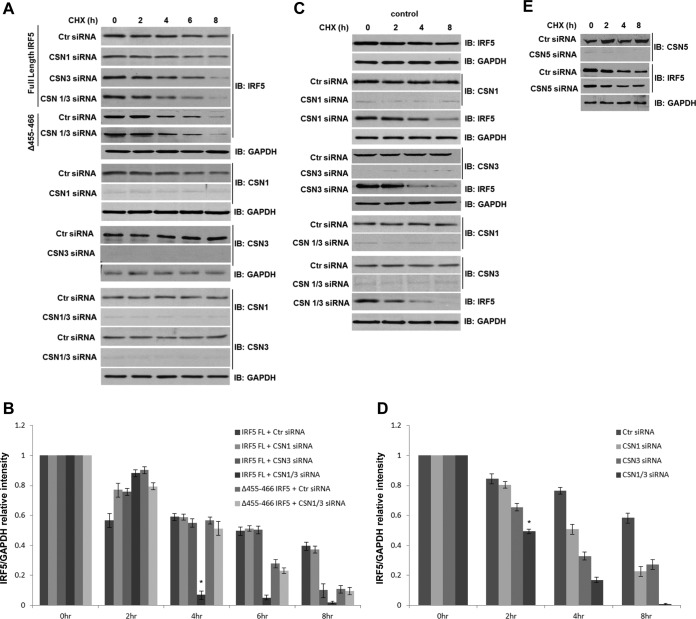FIG 5.
Knockdown of CSN1 and CSN3 promotes IRF5 degradation. (A) Plasmids encoding full-length (FL) IRF5 or the Δ455-466 mutant were transiently cotransfected with control siRNAs (Ctr siRNA) or siRNAs targeting CSN1, CSN3, or the combination of the two, into Hek 293T cells. Cells were then treated with CHX, and protein expression was analyzed over the indicated time periods post-CHX treatment. Knockdown efficiency for each siRNA is shown for each independent transfection; GAPDH levels are shown as an internal loading control. Representative data from three independent experiments are shown. (B) Quantitation of IRF5 expression from panel A after densitometry analysis using ImageJ software; means ± SD are plotted from three independent experiments. The point at which the effect of the CSN1/3 knockdown on IRF5 FL stability becomes statistically significant is shown; *, P < 0.001 by Student's t test. (C) Same as that described for panel A except that siRNAs were transiently transfected into THP-1 cells and endogenous IRF5 and CSN subunits 1 and 3 were examined by immunoblotting with specific antibodies. Representative data from three independent experiments are shown. (D) Same as that described for panel B except that relative IRF5 expression from panel C is quantified; means ± SD are plotted from three independent experiments. The point at which the effect of the CSN1/3 knockdown on IRF5 stability becomes statistically significant is shown; *, P < 0.01 by Student's t test. (E) Same as that described for panel C except that siRNAs targeting CSN5 were transfected into THP-1 cells and their effect on IRF5 expression was examined. Representative data from three independent experiments are shown.

